Testing Services
Our products are tested to ensure high-quality and exceptional performance.
Since the 1980s, Dixon has been conducting testing of our products to ensure the utmost quality, performance, and endurance in the industry. We believe it is important to conduct these tests in a specially designed environment which best promotes safety and an accurate representation of real-world scenarios. We offer the services necessary to provide:
All these services are provided through the Dixon Innovation Center Test Lab, where every request is given the full attention to detail necessary to ensure the customer is provided the information they seek. To achieve this the following process is completed:
Current methods of testing offered through the Dixon Innovation Center Test Lab includes the following:
To request testing please email us.
*If you are interested in any testing which is not listed, please let us know and we will investigate that as a potential addition to our test capabilities/offering.
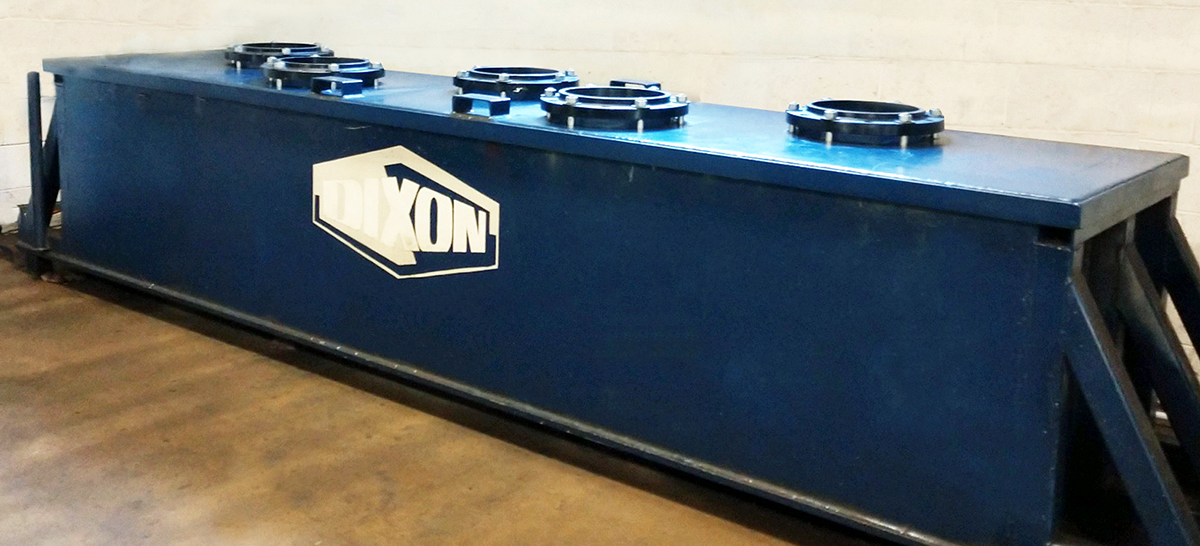
Hydrostatic testing is done with the valve/hose filled with water and purged of all air from the system, we then build pressure via an air-driven liquid pump. The amount of pressure and time is variable and dependent on the requirements of the test, provided the pressure is within the maximum capacity of our system. If we are to follow a specific standard or specification as per the testing request, a copy of said document will be required to conduct testing.
Specifications:
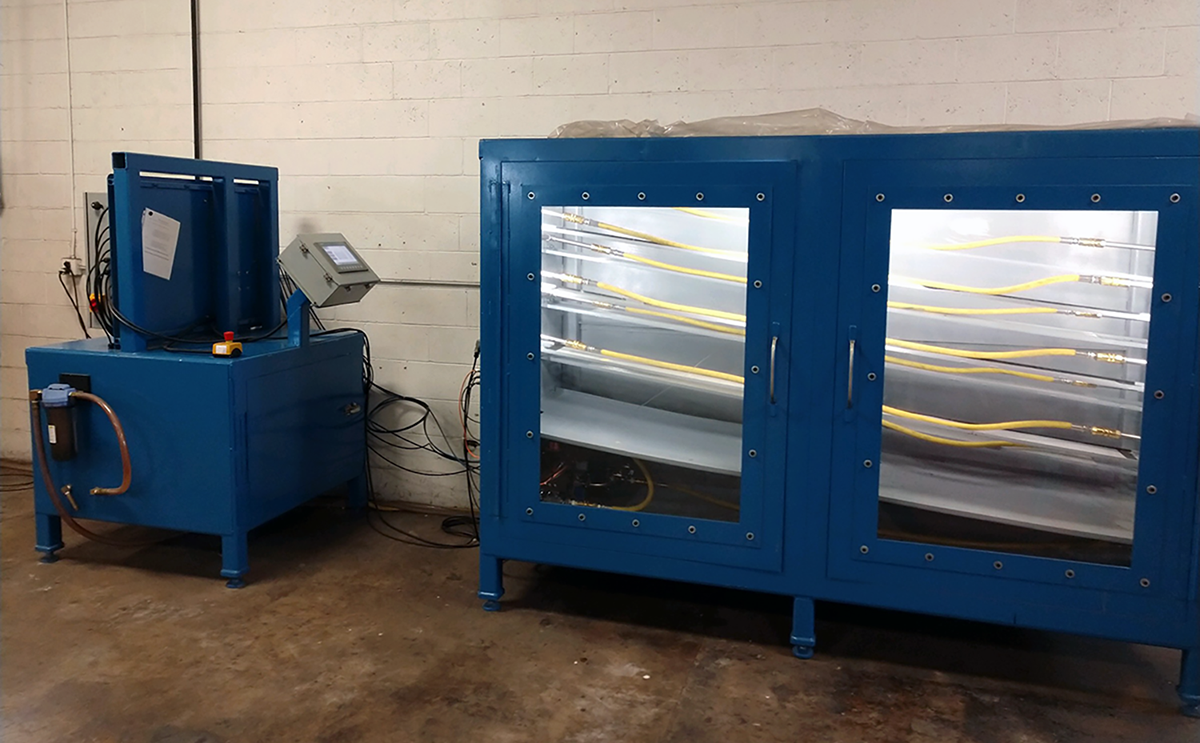
Cycle testing is performed using an air-driven liquid pump. The process involves building pressure and holding it for a set time frame, followed by going to no pressure for another allotted time frame. The process is repeated for a set amount of cycles. All variables (# of cycles, time at pressure, pressure, time at no pressure) can be altered to match the testing requirements, provided they stay within the specifications of the equipment. If testing involves specific standards or specifications as per the test request, a copy of said document will be required to conduct testing.
Specifications:
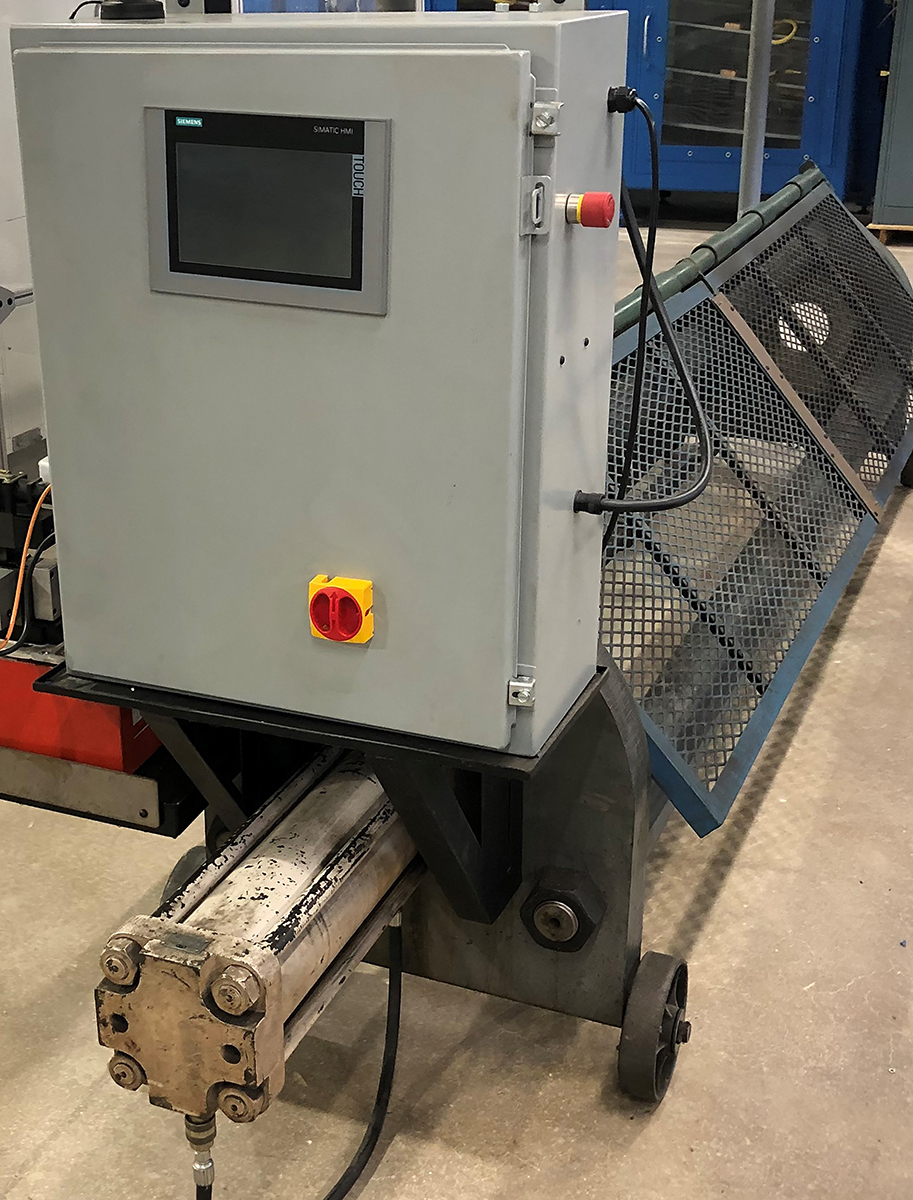
Pull/Axial Force testing is conducted with no internal pressure on the sample. The setup pulls the sample along the centerline of the hose assembly using specially designed caps with eye bolts. The sample is pulled until failure occurs where the load is stored and compared to the theoretical failure force based on the theoretical burst pressure failure as seen during Hydrostatic Testing. If you are looking for a specified load as opposed to matching the theoretical burst pressure failure, the load can be set to override the comparison to the theoretical failure force. If testing involves specific standards or specifications as per the test request, a copy of said document will be required to conduct testing.
Specifications:
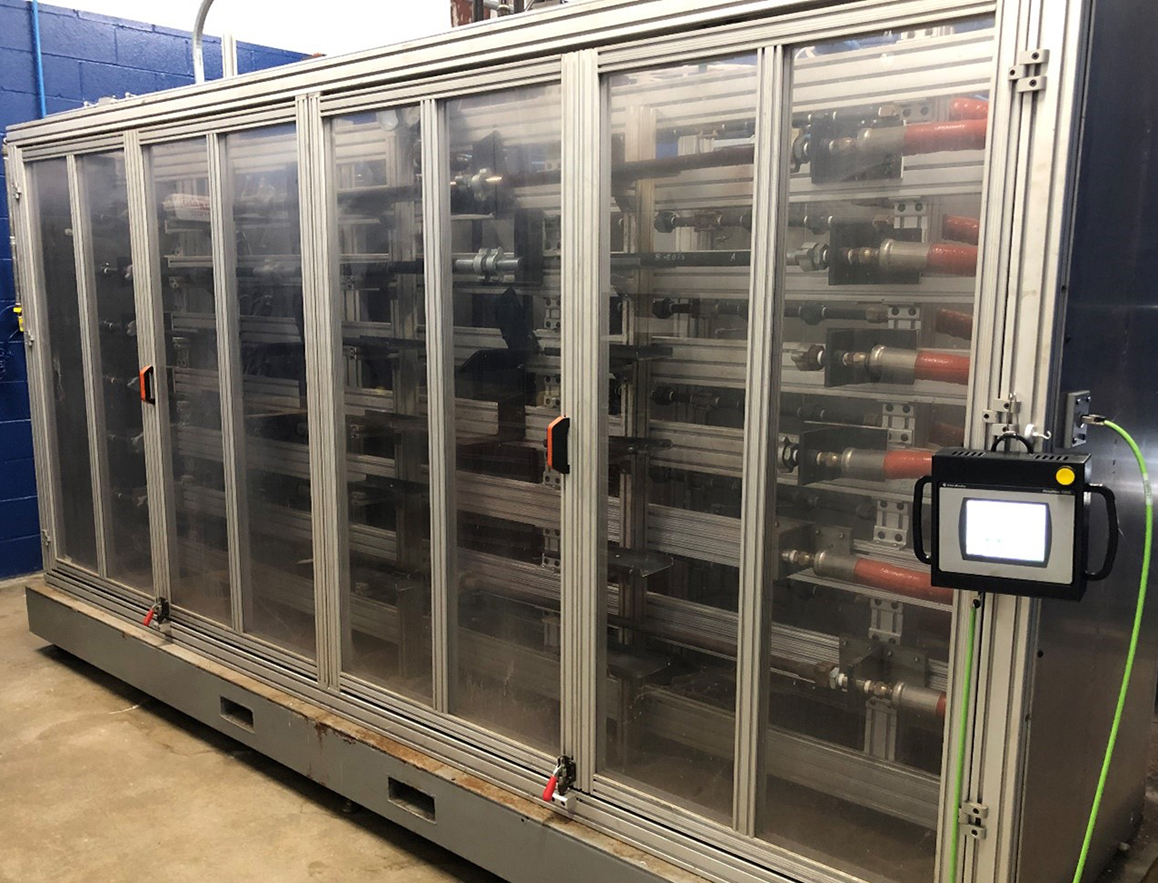
Steam tests are run for the singular purpose of certifying a hose with our Crimp Boss steam fittings. All hoses need to be verified and approved through a group of select individuals before pursuing the hose as an option for our fittings. The testing process consists of samples experiencing steam exposure for an extended period with daily breaks and to assess the sample's ability to hold pressure afterwards. Parameters of the test can be adjusted for specific standards per the request, provided the changes remain within the specifications of the equipment. If we are to follow a specific standard or specification as per the testing request, a copy of said document will be required to conduct testing.
Specifications:
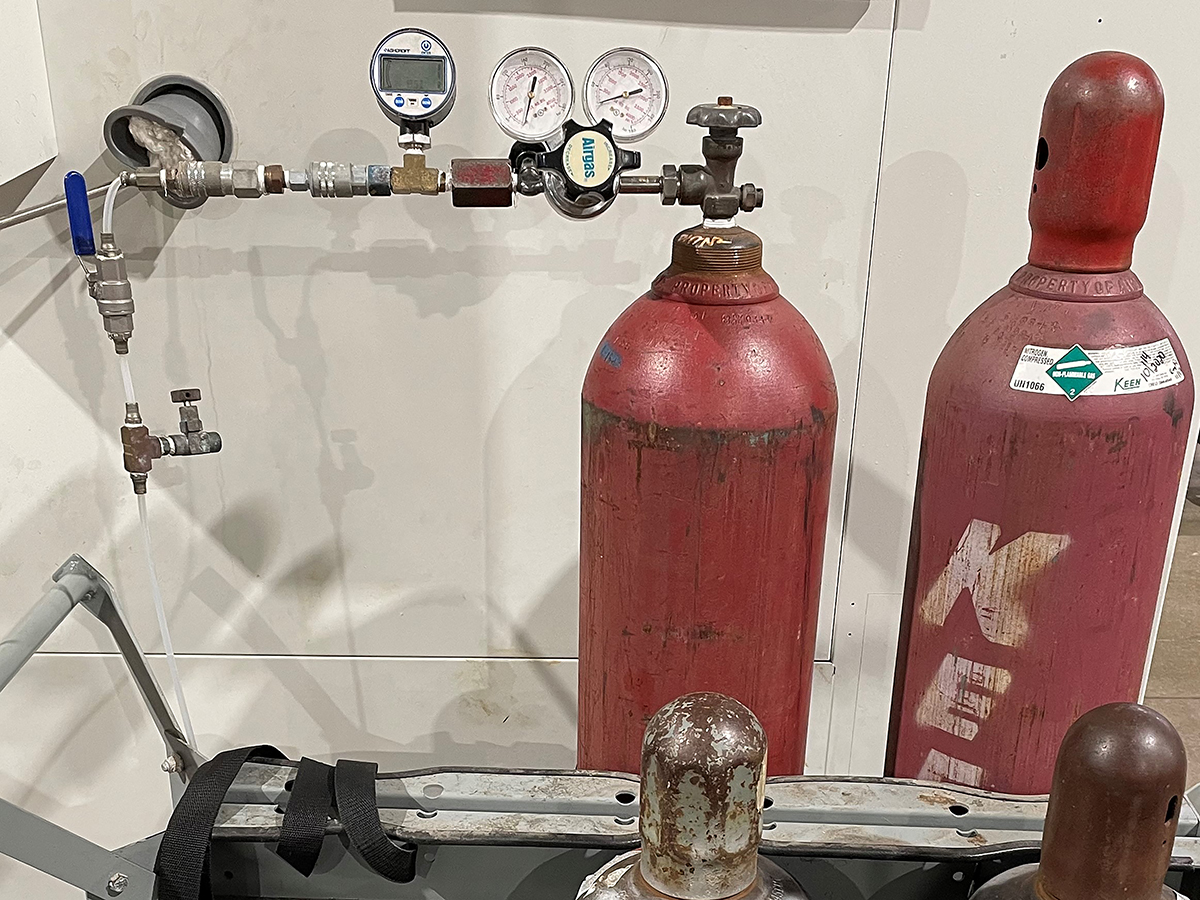
Air/Gas testing identifies leaks which may not appear as easily as with a standard Hydrostatic Test. Using either shop air or nitrogen gas from canisters, a sample is placed into a tank where we observe for any bubbles (either being under water or with leak-detection spray), which show up when pressure is applied. If testing involves specific standards or specifications as per the test request, a copy of said document will be required to conduct testing.
Specifications:
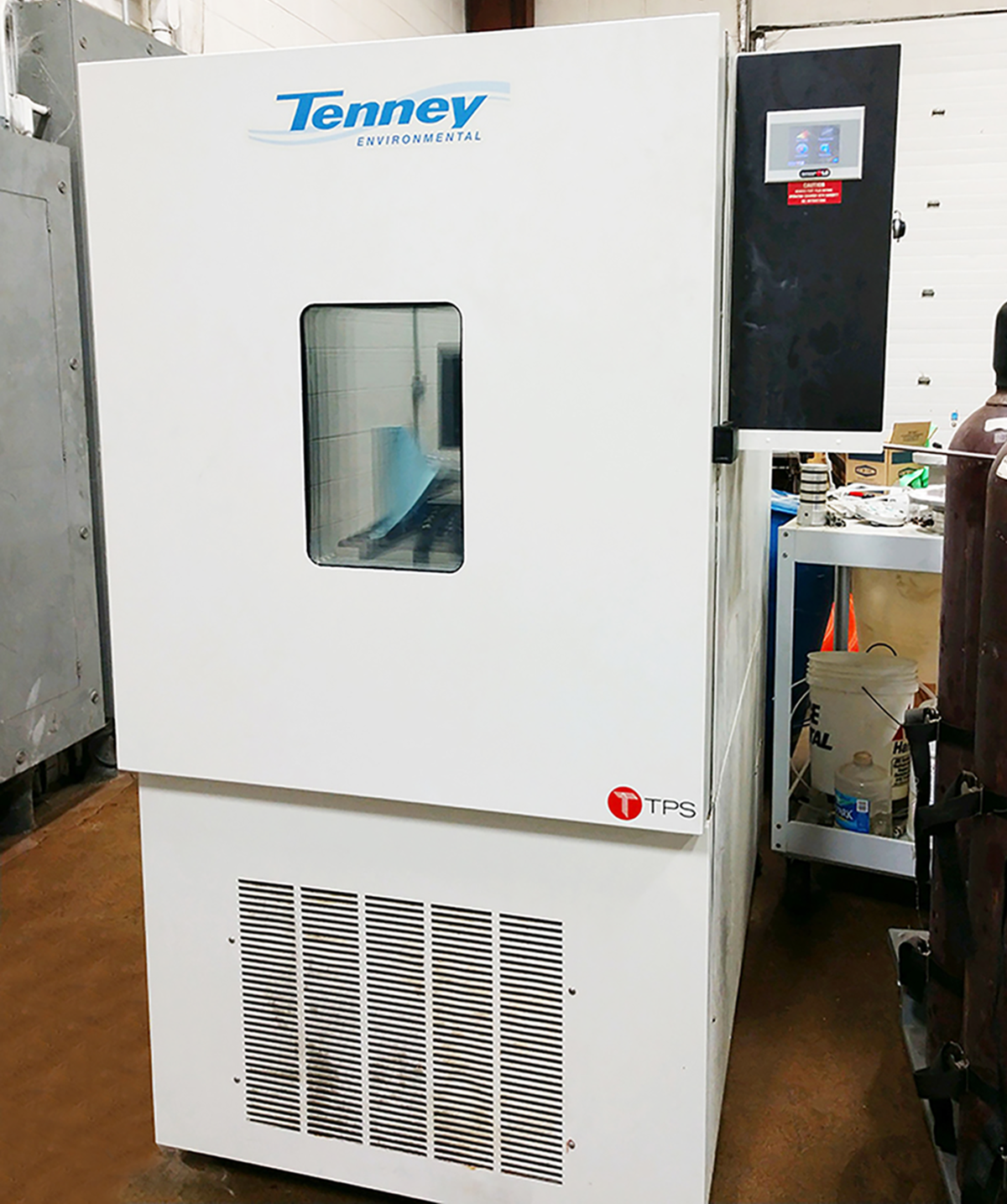
The Environmental Chamber is used to simulate various temperatures for their effect on either fittings or hose assemblies. For this test, little to no pressure is applied to the samples. No catastrophic failures can occur in the chamber, as it may cause damage to the equipment in the process. Fixtures can be made to handle almost anything provided it can fit into the chamber. If we are to follow a specific standard or specification as per the testing request, a copy of said document will be required to conduct testing.
Specifications: